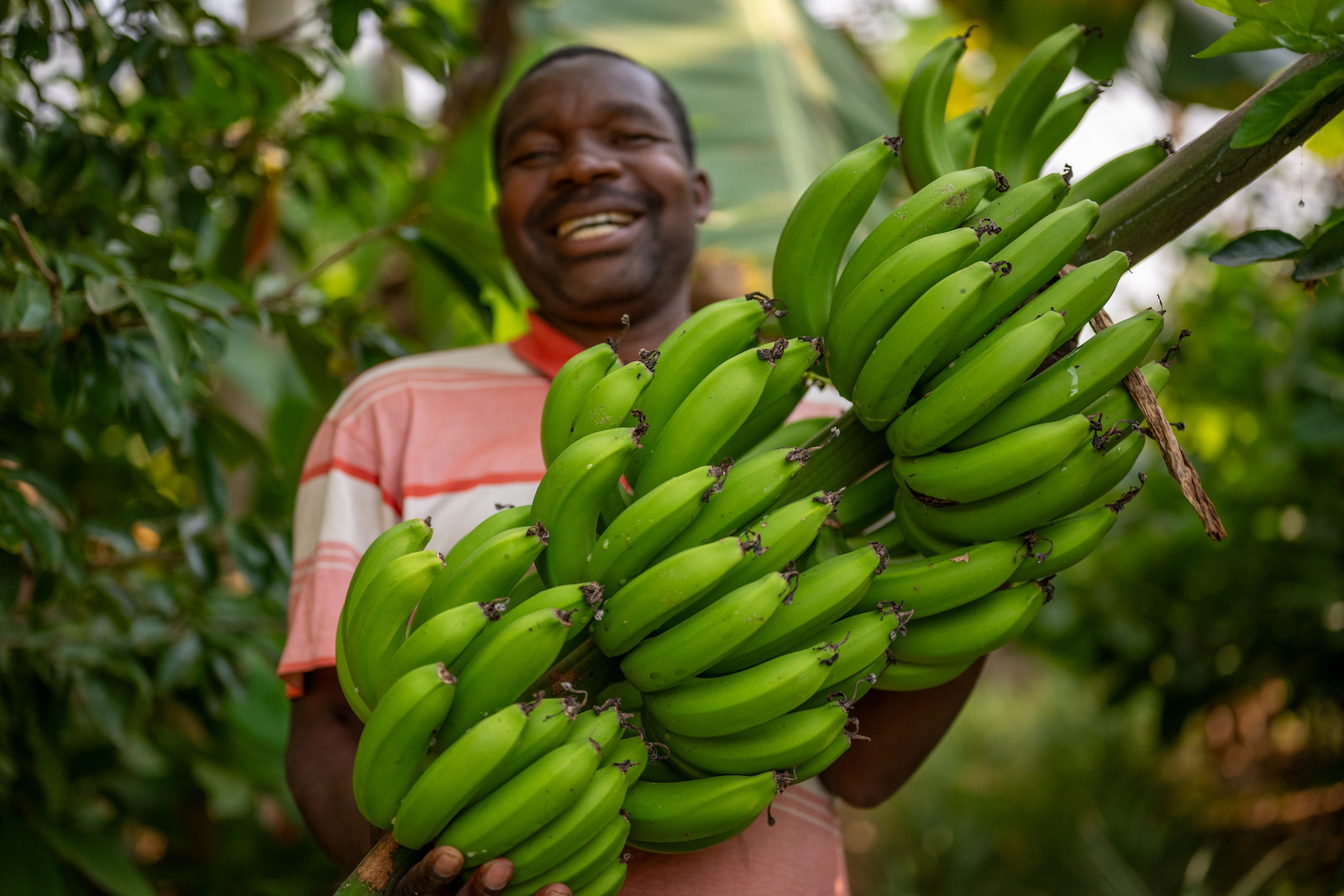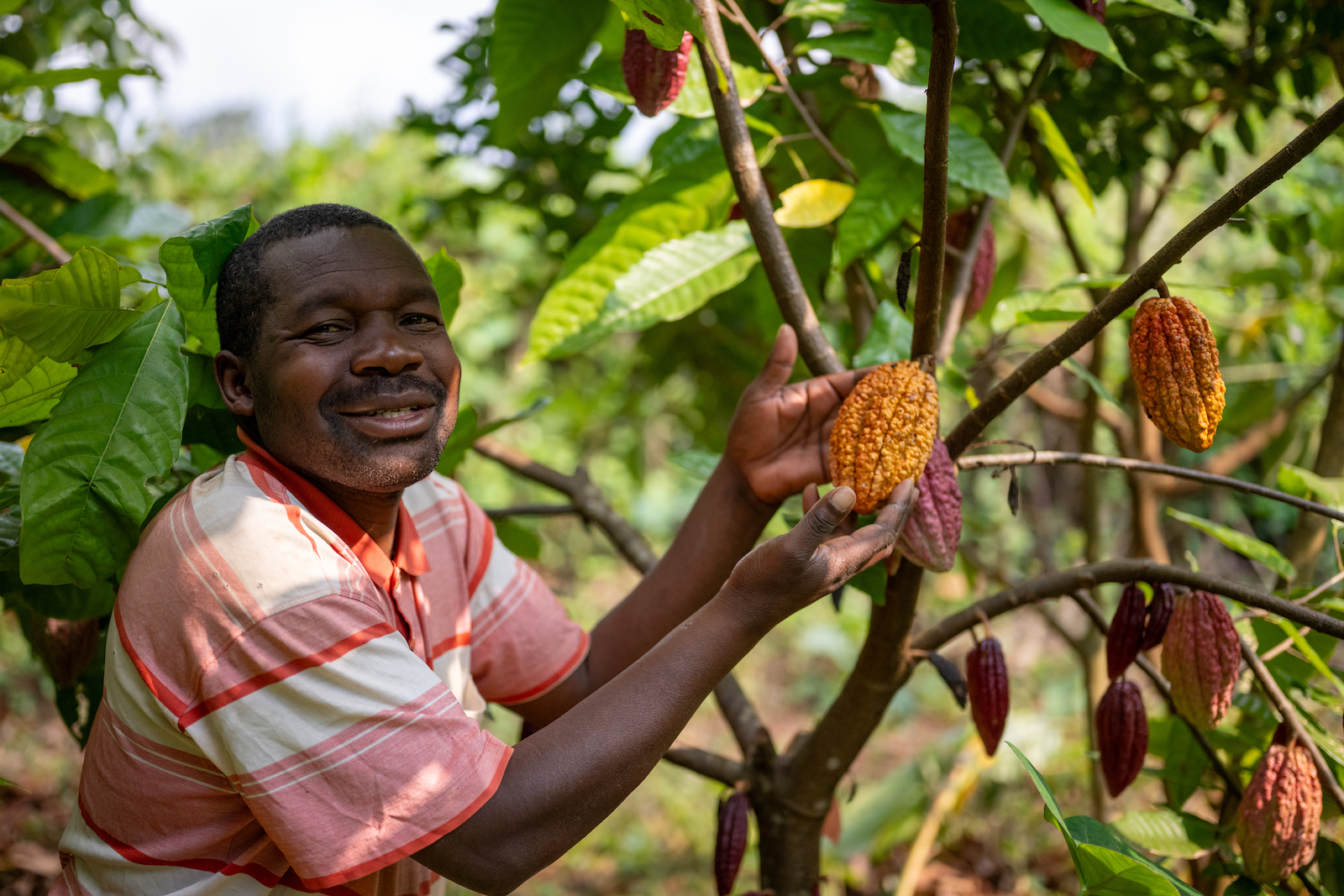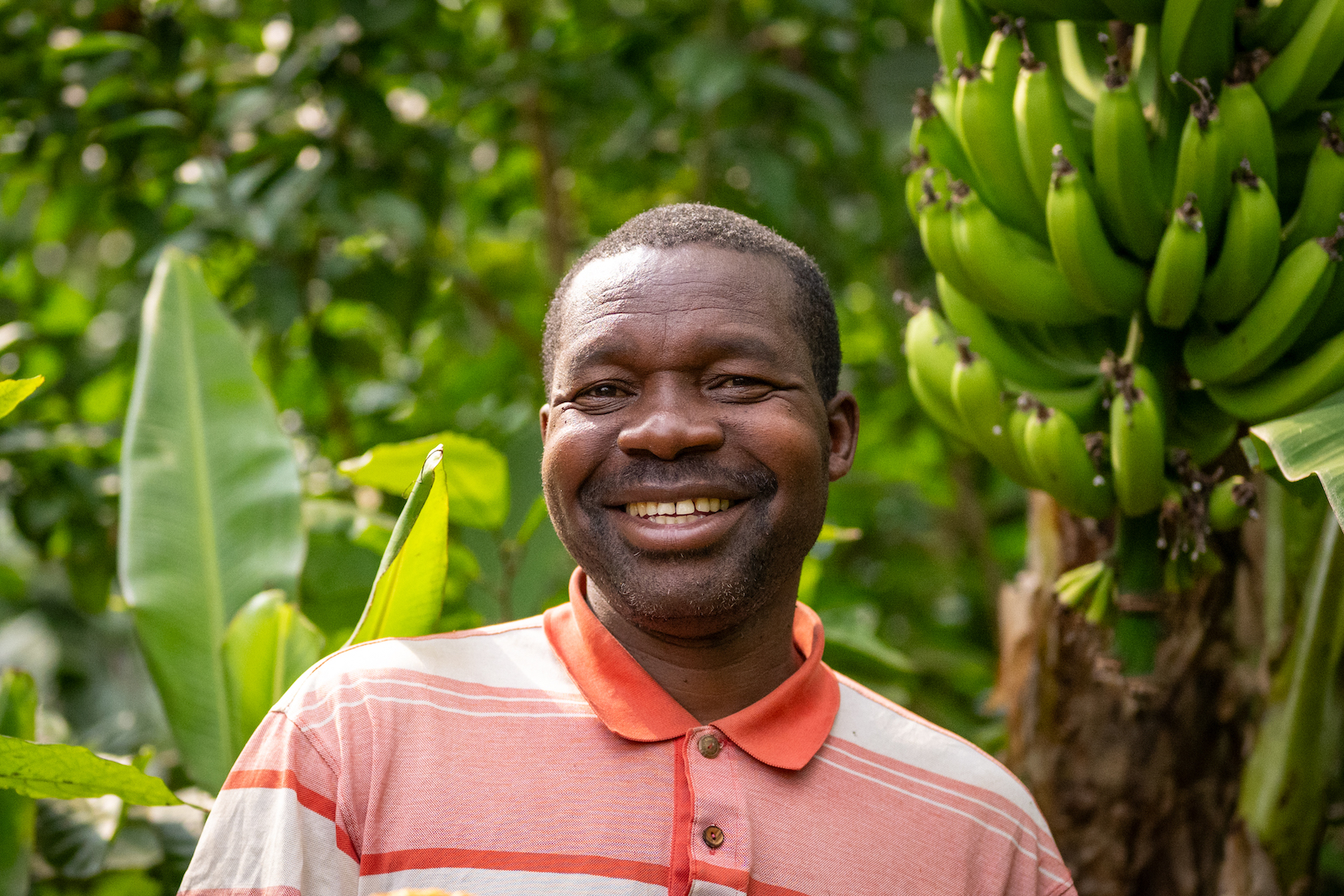Growing More by Farming Smarter
Emmanuel, a farmer from Chanyandira village in Tanzania’s Uluguru mountains, has long supported his family by growing fruits and vegetables on one and a half acres of land. When he joined APOPO’s HeroTREEs program, he discovered how syntropic agroforestry could help him grow more with less, improve soil health, and inspire his neighbors.
In his own words, Emmanuel shares what he learned and how it is changing his farm and future.
My name is Emmanuel and I am fifty-two years old. I had a wife, but she passed away. We have five children. Three are still in school and two have already finished secondary education.
I come from Chanyandira village in Mgeta. I am a farmer of vegetables and fruits. My farm is one and a half acres in size. I am responsible for supporting and raising my family.
I heard about the agroforestry project called Farming with Trees for Food. I first heard about it this year through an invitation to farmers. We were called to a meeting where experts explained syntropic agroforestry. When I heard about it, I felt happy. In my heart I said I too will practice this farming because I see it has great benefits.
The things I found most important during training were crop diversification and planting many crops on the same land. For example, I can plant bananas, coffee, and timber trees. That impressed me. Another thing that impressed me is that I can organize the ridges so I plant long-term crops on one and short-term crops on another.
Before joining this project, I thought I needed large areas of land to grow different crops separately. I used to grow one crop here and another crop over there. But after this training, I realized that I can plant many crops in the same space.
Another challenge I faced before was drought. My fields were often open and bare. I did not know how to conserve soil moisture. Through this project, I have learned to use mulching and shade crops to keep the soil moist.

When I visited a demonstration farm under this project, what I saw gave me a good picture of my farm’s potential. I believe I too will achieve the same results. Even if it happens slowly, I know I will harvest better yields and my farm will look more beautiful through agroforestry.
Syntropic Agroforestry means having many types of crops together without using chemicals. These plants help improve the soil. The land stays covered and protected. That is why we use mulch. Leaves are used to cover the soil. As they rot, they make the soil more fertile. That is how I understand it.
I know others who also took part in this training. When I talk to them, they are happy and say they will also continue with agroforestry because it is beneficial. People who pass by my farm ask questions. I share my experience and encourage them to try it. I show them what I have achieved and how they can benefit too.

I believe good results will come. Personally, I will be able to support my family better. But the wider community will also benefit. This kind of farming helps us fight against climate change caused by poor land use. I believe that in time, many farms will be practicing syntropic agroforestry in Tanzania because of the HeroTREEs program.
Two of my children finished secondary school but could not continue further. I am now teaching them this new way of farming so they can learn early and pass on the knowledge. I want what I’ve learned to be passed from generation to generation. When my children inherit this land and knowledge, even when I grow old, they will keep farming this way. They will teach others too, and this farming will not stop.”
Support the HeroTREEs project and help protect the environment and safeguard the future of local communities?


